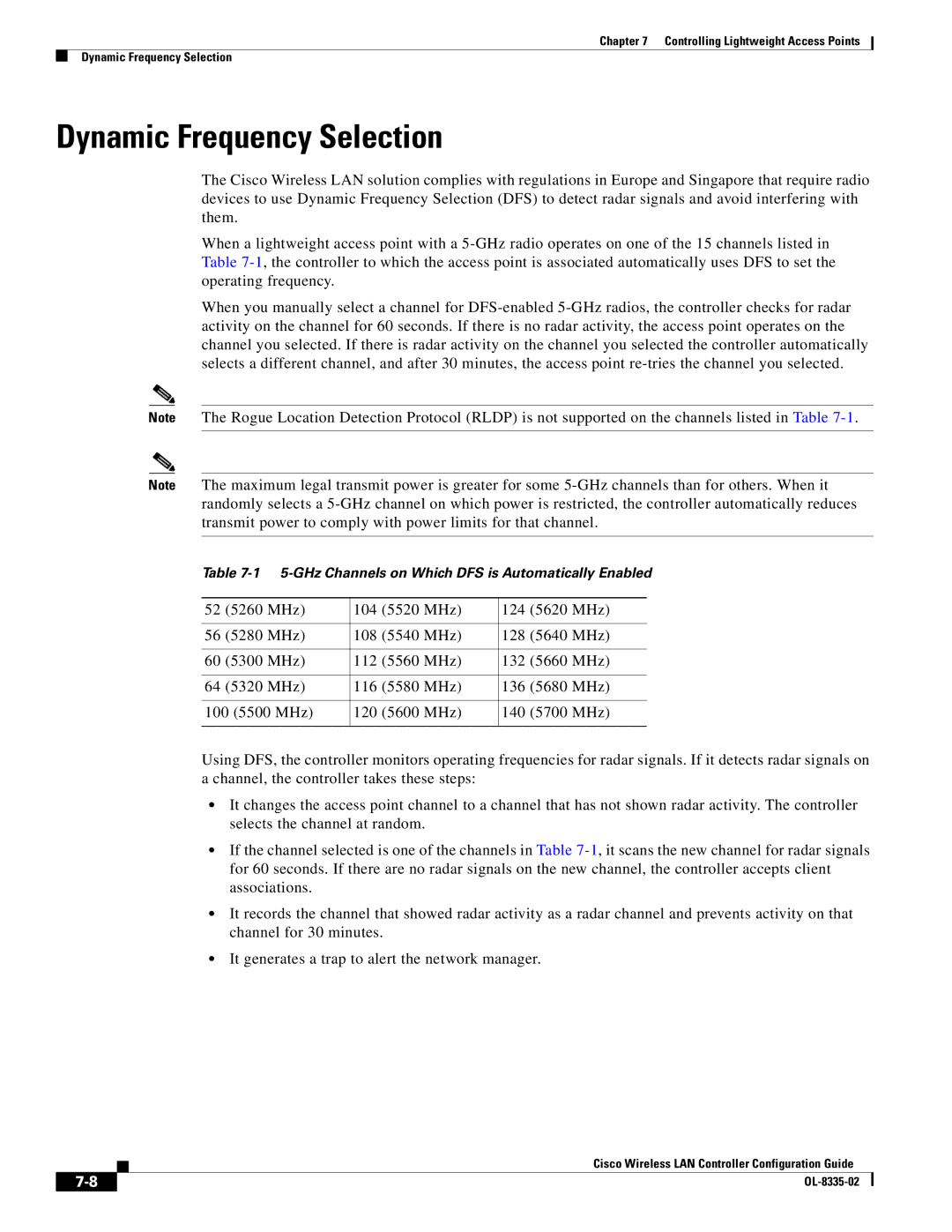
Chapter 7 Controlling Lightweight Access Points
Dynamic Frequency Selection
Dynamic Frequency Selection
The Cisco Wireless LAN solution complies with regulations in Europe and Singapore that require radio devices to use Dynamic Frequency Selection (DFS) to detect radar signals and avoid interfering with them.
When a lightweight access point with a
When you manually select a channel for
Note The Rogue Location Detection Protocol (RLDP) is not supported on the channels listed in Table
Note The maximum legal transmit power is greater for some
Table
52 (5260 MHz) | 104 (5520 MHz) | 124 (5620 MHz) |
|
|
|
56 (5280 MHz) | 108 (5540 MHz) | 128 (5640 MHz) |
|
|
|
60 (5300 MHz) | 112 (5560 MHz) | 132 (5660 MHz) |
|
|
|
64 (5320 MHz) | 116 (5580 MHz) | 136 (5680 MHz) |
|
|
|
100 (5500 MHz) | 120 (5600 MHz) | 140 (5700 MHz) |
|
|
|
Using DFS, the controller monitors operating frequencies for radar signals. If it detects radar signals on a channel, the controller takes these steps:
•It changes the access point channel to a channel that has not shown radar activity. The controller selects the channel at random.
•If the channel selected is one of the channels in Table
•It records the channel that showed radar activity as a radar channel and prevents activity on that channel for 30 minutes.
•It generates a trap to alert the network manager.
Cisco Wireless LAN Controller Configuration Guide
|
| |
|
